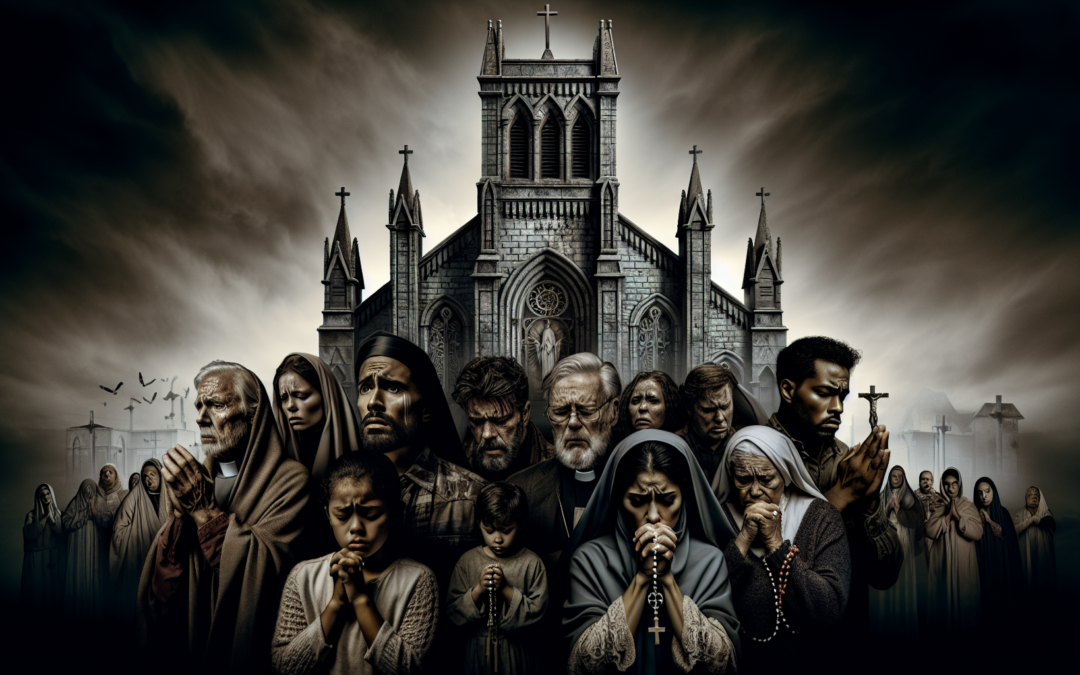Understanding the Confrontation: A Law Enforcement Perspective
In an age where civil liberties and rights are frequently debated, interactions between law enforcement and civilians have come under intense scrutiny. The confrontation between an auditor and a churchgoer unfolds as a vivid microcosm of these tensions. While some may view it as an act of aggression against a person of faith, it is crucial to understand the law enforcement perspective to grasp the broader implications.
The Scene Unfolds
Auditors, often seen as crusaders for transparency and accountability, sometimes resort to provocative means to make their points. This particular incident began with the auditor entering the church, recording the scene under the banner of public accountability. Video cameras rolled as emotions ran high, and one thing became abundantly clear: the task of maintaining order while respecting freedoms is anything but straightforward.
Balancing Act
For law enforcement, weighing First Amendment rights against the need to preserve public peace can be a tightrope walk. Officers are required to ensure that both parties—auditor and churchgoer—are unharmed while upholding laws that protect freedom and security. In this case, it becomes apparent that the balancing act extends beyond maintaining peace; it involves interpreting complex constitutional principles in real-time, under the belligerent eyes of the public.
Under the Helmet: Training and Judgment
When confronted with such volatile situations, law enforcement officers draw on their extensive training. This particular scenario required swift judgment calls—decisions that are often critiqued if perceived as veering into either excessive force or insufficient action. Understanding their decision-making process can evoke a sense of empathy, recognizing the tremendous pressure these officers face.
Stress arises not only from the confrontation itself but also from the knowledge that their actions will likely be dissected by the media, advocacy groups, and public opinion. Each officer on the ground must tread the fine line of applying the law while navigating ethical landmines. This case serves as a poignant reminder: that every uniformed officer is also an individual, tasked with fulfilling a role that demands both authority and fairness.
Public Scrutiny and Accountability
In the era of viral videos and social media scrutiny, law enforcement operations are unapologetically transparent. This transparency, while fostering accountability, can come at the cost of impeding the officers’ execution of duties. Public judgment rendered via platforms like Facebook and YouTube often neglects the full scope of scenario nuances and legal implications.
In incidents like these, officers are captured on video from the moment they arrive to the moment they leave—each frame subject to public interpretation and sometimes harsh criticism. With thousands of viewers poised to critique, officers find themselves in a relentless gauntlet of public examination. This phenomenon underscores the need to deeply understand the officers’ perspective and recognize that, amidst such scrutiny, they adhere to rigorous ethical codes and complex regulations.
The Role of Community Policing
Community policing has gradually become a cornerstone of law enforcement strategy. It’s vital for demystifying the police’s role and bridging the gap between the law and everyday citizens. The auditor-churchgoer confrontation serves as a scenario perfectly suited to employing community policing principles. Officers who engage with respect while providing clarity on their actions often create a more cooperative atmosphere.
In the delicate ambience of a church—a place of worship woven with tradition, respect, and a sanctuary’s quiet—law enforcement roles are further amplified. Such spaces demand heightened sensitivity to both community sentiments and individual rights.
A thorough analysis would suggest that officers who arrived on the scene demonstrated a commitment to this form of policing. Despite the tension, their main objective was securing a peaceful resolution and ensuring that all parties involved comprehended their actions and decisions rooted in law.
Moving Forward: Lessons and Reflections
This incident leaves lessons in its wake for law enforcement agencies and auditors alike. For the former, it serves as a reason to amplify training on conflict de-escalation and emphasize empathy—understanding that their every move is under high scrutiny and repercussions are severe. Being technically competent requires more in the current landscape; it requires emotional intelligence and an innate understanding of nuanced human interactions.
Auditors, on the other hand, should realize the weight of responsibility in their roles. Activism draped with antagonism can unravel societal threads, causing more harm than good. Sensationalism should be supplanted by methods that foster constructive dialogue and deep understanding. Transparency need not be an adversary to law enforcement; mutual respect can pave the way for more effective accountability.
Concluding Thoughts
To encapsulate, the confrontation between an auditor and a churchgoer, examined through the lens of law enforcement, reveals a complex mosaic of duties, rights, and human experiences. Law enforcement officials stand as gatekeepers of this intricate balance, and to them, we extend our understanding if not our unbridled support. It’s an unwavering reminder that their roles, whether in churches or streets, carry weightier ramifications than what meets the eye.
Stay engaged in future discussions and episodes by subscribing to The John Ligato Show on YouTube. For a raw look at the incident, view the detailed coverage here. Also, join the broader conversation on Facebook with insights and thoughts on keeping our communities effectively balanced and policed.

Recent Comments